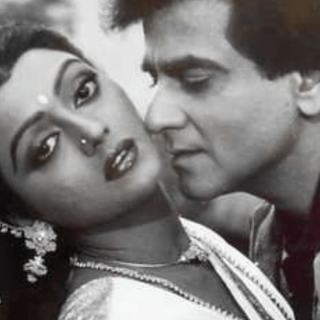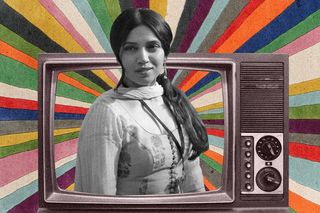
Can We Move On: From the Trope of the Feisty Small Town Girl Obsessed With Upward Mobility
Though depictions of a small-town girl’s dreams represent feminist progress, she is never given the ability to fail or appear vulnerable.

In Can We Move On, we revisit old tropes and question whether they have any remaining cultural relevance.
The small-town setting is a Bollywood goldmine, with the industry churning out film after film involving rural, tribal, or semi-rural regions — be it the beloved Gangs of Wasseypur series, critically-acclaimed political Shakespearean adaptions like Maqbool and Omkara, or the lighter, sweeter romance and slice-of-life stories like Bunty Aur Babli and Bareilly ki Barfi.
Within the confines of the last category exists the feisty small-town girl, who has big dreams for her future. She’s sharp, manipulative, and driven towards a single goal — launching herself like a rocket towards success and upward mobility. Babli (Rani Mukherjee) from Bunty Aur Babli wanted to be Miss India; Aarti (Kriti Kharbanda) from Shaadi Mein Zaroor Aana tops every exam she’s ever written; Vaidehi (Alia Bhatt) from Badrinath ki Dulhania wants to travel the world as an air hostess; Meghna (Priyanka Chopra Jonas) from Fashion runs away from home to become a supermodel. What these women have in common is the desire to escape from their home to fulfill their dreams, and take the big bad real world head-on in the process, with no fear of failure.
These women don’t have to be career-oriented; lifestyle-oriented upward mobility is also popular.Annie (Athiya Shetty) is obsessed with marrying a man who can sponsor her life in a foreign country. Kavya (Alia Bhatt) from Humpty Sharma ki Dulhania wants a wedding only so she can buy a beautiful, expensive wedding dress — arguably, pragmatic concerns.
These feisty small-town girls are hilarious and strong; their aspiration of upward mobility is unique, inspiring, and a sign of feminist progress. More importantly, they are a far cry from the urban gaze that peers awkwardly into storylines. Films like Aisha end up giving a foolish, Eliza Doolittle-esque persona to the only small-town girl amid the bevy of posh girls frequenting parties and branded stores.
But, movies that house these quirky characters have a singular focus on upward mobility, whichbegs the question — are these women’s stories only worthwhile because they have big dreams and dramatic plans? Do small-town women with only unique aspirations count, and not women who mess up and fail often? Do the latter deserve to tell their stories to a mass audience?
Related on The Swaddle:
The unique fascination with a small-town girl’s firecracker success story mirrors its real-life versions that film heroines themselves embody. From Kangana Ranaut to Priyanka Chopra Jonas, there’s a unique fascination with women who come from ‘nowhere’ and become famous enough to merit the urban populace’s attention. The psychology behind this fascination is simple, it echoes the traditional love for rags-to-riches parables. People enjoy watching successful people speak about their roots, social psychology tells us; but their idea of success should almost always involve enormous wealth, success, and fame. The poor roots allow people to empathize, and the richness allows people to aspire. This is also why you’ll never see Bollywood’s small-town girls talk about the material wealth their parents possessed.
Bollywood has no dearth of complex, unique films that explore feisty small-town women’s stories that do not involve the urban upward mobility trajectory: in Toilet: Ek Prem Katha, Jaya (Bhumi Pednekar) fights to have a toilet built in her new marital home; in Bala, Latika (Bhumi Pednekar, again) builds her legal practice in her small town to help people; in Anaarkali of Aarah, Anaarkali (Swara Bhasker) is a dancer in a small town who fights for her right to assert her consent.
Similarly, there’s no dearth of films in which small-town girls fuck up irrevocably. Rumi in Manmarziyaan is foul-mouthed and cheats on her husband; Bitti (Kriti Sanon) in Bareilly ki Barfi runs away from home because she refuses to be tied down by arranged marriage, and instead seeks out a potential love interest; Devi (Richa Chaddha) in Masaan has to live with the stigma of daring to indulge in unromantic, curious, pre-marital sex. Yet, the shadow of commercial success looms heavy on these films, to show that a feisty small-town girl with big dreams can easily net.
The feisty small-town girl trope, once fresh and unique, is slowly trudging towards telling the same old stories, again and again. (Trust me — they made two Dulhaniya movies, didn’t they?) There is a persistence with which filmmakers hinge on to the unique charm of the small town, as if most of the country isn’t aware of the hopes and dreams of the united Indian middle class.
It’s time we heard different stories — stories of messy small-town girls; of small-town girls with loads of heart and no aspirations; of small-town girls who do NOT want to be models, actresses, or air-hostesses; and of small-town girls who want to change the world, starting from their small towns itself.
Aditi Murti is a culture writer at The Swaddle. Previously, she worked as a freelance journalist focused on gender and cities. Find her on social media @aditimurti.
Related


The Buzz Cut: A ‘Game of Thrones’ Broadway Production Is in the Works. Can It Ever Make Up for the Series Finale?
